#Palatine Hill
Text

Rome’s 'Lost' Imperial Palace 'Domus Tiberiana' Reopens
Until recently a crumbling and off-limits ruin near the famous Colosseum, the Domus Tiberiana palace — built in the first century AD and beloved by Nero — hopes to once again take its place as one of the city’s top tourist attractions.
The ancient palace sits on Palatine Hill — the city’s oldest hill, overhanging Rome —from where imperial dynasties ruled for centuries. But over the years, the site fell into disrepair and in the 1970s, the Domus Tiberiana site was shut due to the structural instability of some of the ruins. The closure left behind what many Romans described as a “black hole” in the capital’s archaeological heart.
Now, after a six-year makeover, the palace has reopened its doors as a “diffuse museum,” with findings and frescoes scattered across the site to provide visitors with an insight into the palace’s ancient grandeur.
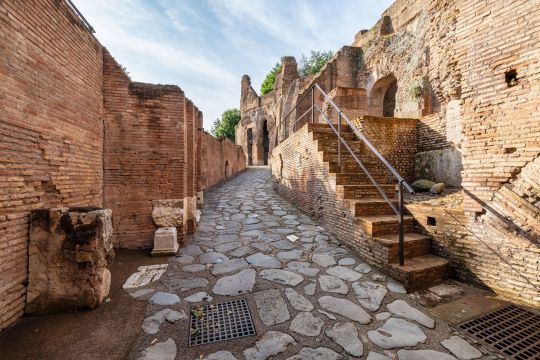
And it was grand. The Domus Tiberiana was Rome’s first imperial palace, built by the emperor Tiberius who combined and incorporated the pre-existing noble mansions built on the hill. Occupying over four hectares, the palace featured residences alongside large gardens, places of worship and rooms for the emperor’s Praetorian guard.
As the seat of Rome’s power and politics, Domus Tiberiana held a prime location, high above the Palatine and Roman Forums, offering its occupants a “balcony view of the city.” Over time, the Domus was embellished and enlarged by other emperors including Nero, who was crowned on its steps aged just 16, in 54 AD.
Alfonsina Russo, director of the Colosseum’s archaeological park (in which Domus Tiberiana falls) and lead archaeologist on the renovation, said that ancient antiquities, many exceptionally well-preserved, were unearthed during the project.
The artifacts — bright stuccos, frescoes, amphorae, potteries, looms, terracotta, and divinity statues related to the cults of Isis, Dionysius and Mithras — offer visitors a trip through time, said Russo.

“They make this place — formerly (inhabited) by aristocratic families, then Roman emperors — feel alive again,” she said. “There are seven exhibition rooms full of extraordinary finds, starting with those preceding the original construction of the palace when aristocrats lived in mansions before Tiberius subsumed them into the Domus.”
Among the newly-exposed and frescoes are some of the earliest paintings of lemons (considered an exotic fruit in Ancient Rome, as they hailed from the Far East) and a depiction of a gladiator, proving that the era’s gladiatoral games were appreciated by rich families, explained Russo.
The imperial palace remained in use until the 7th century, when it became the papal residence of John VII. In the mid-16th century, the aristocratic Farnese family — who were powerful local landowners — built the lavish Orti Farnesiani gardens on the site, adorning it with ornaments and sculptures of nymphs, satyrs and fauns.
“This monument speaks of history,” Russo added. “We have restored (Domus Tiberiana) to its past splendor, but more work lies ahead.”
Indeed, painstaking efforts have been made to blend old and new. A series of majestic, reddish-brown vaulted arches that greet visitors having been carefully reconstructed with the same materials as ancient Romans used in the past.
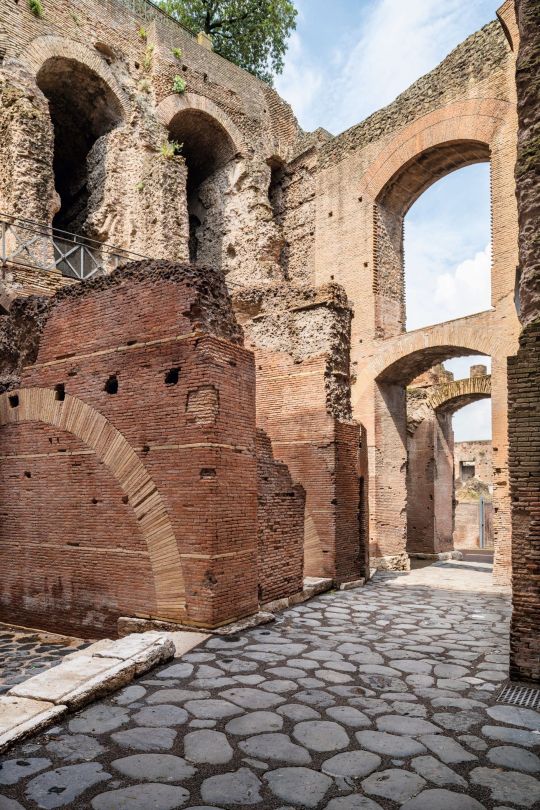
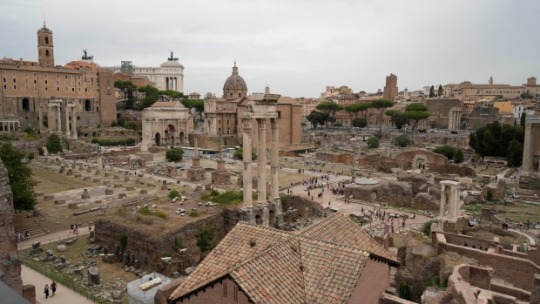
“What makes this revamped Domus unique is the architectural style,” said Russo. “We managed to use original materials to reinforce and strengthen the handmade 15-meter (50ft) tall front arches (which run alongside the palace’s) ancient paving.”
It has certainly caught the public’s attention. Since reopening at the end of September, Domus Tiberiana has attracted some 400,000 visitors, a “huge success,” said Russo, adding that she believes that this incarnation of the Domus Tiberiana offers visitors the most “evocative” visit in generations.

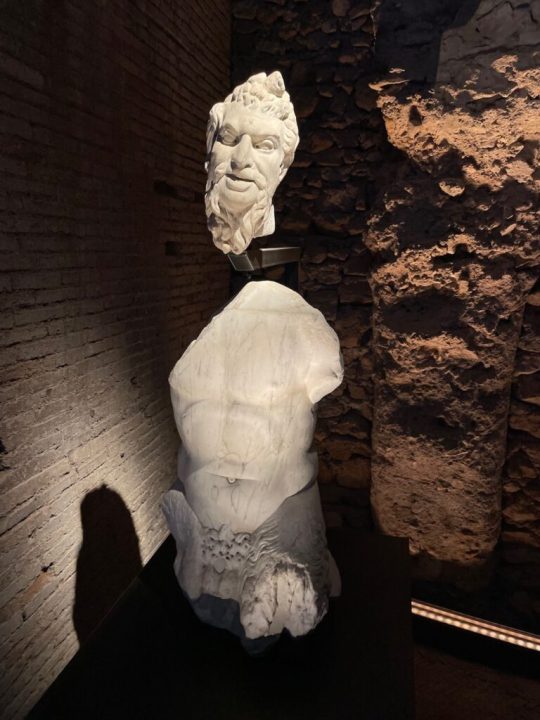
Archaeologist and scholar of ancient Rome Giorgio Franchetti saidN that, in the reopening of the Domus Tiberiana complex, Rome has “recovered a lost jewel.”
“The Palatine Hill has always been the stage of Rome’s power politics,” he said in an interview. “Tiberius likely chose this spot to build the palace as it was where his family residence stood. There aren’t many places like the Domus Tiberiana where you can really breathe the past.”
By Silvia Marchetti.
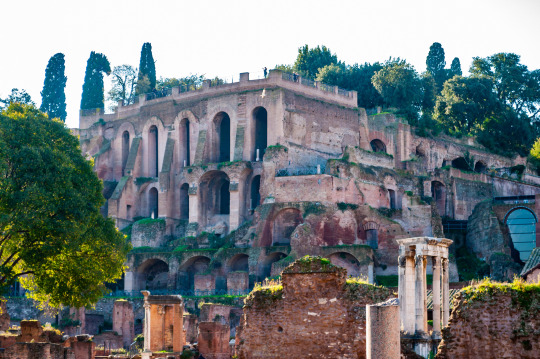
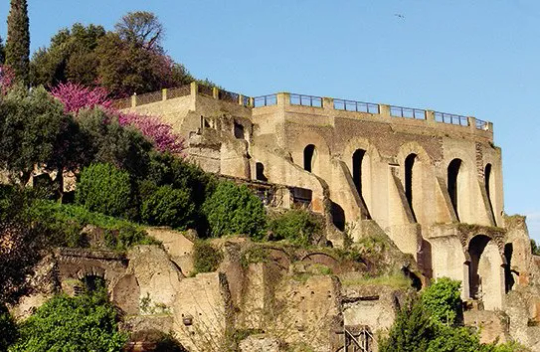
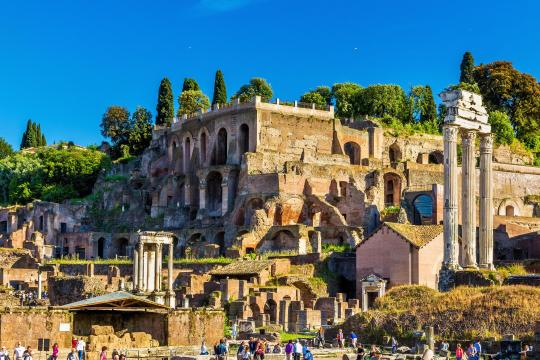
#Rome’s 'Lost' Imperial Palace 'Domus Tiberiana' Reopens#Domus Tiberiana palace#Palatine Hill#Emperor Tiberius#Emperor Nero#ancient artifacts#archeology#archeolgst#history#history news#ancient history#ancient culture#ancient civilizations#ancient rome#roman history#roman empire#roman emperor#roman art
263 notes
·
View notes
Text

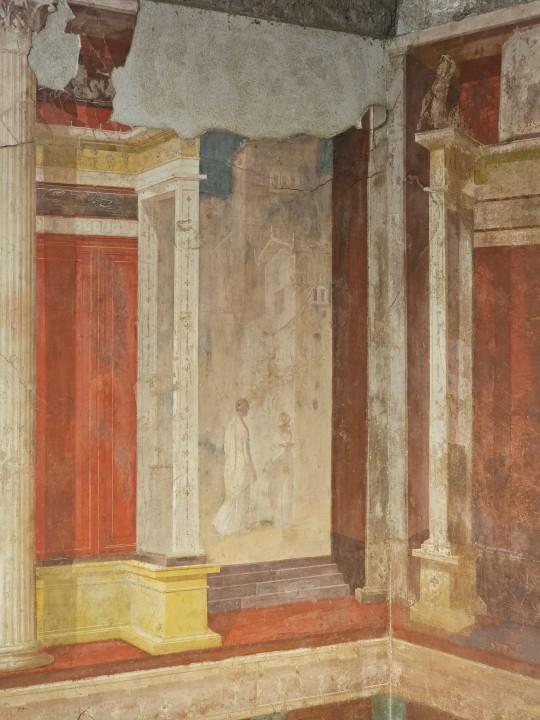

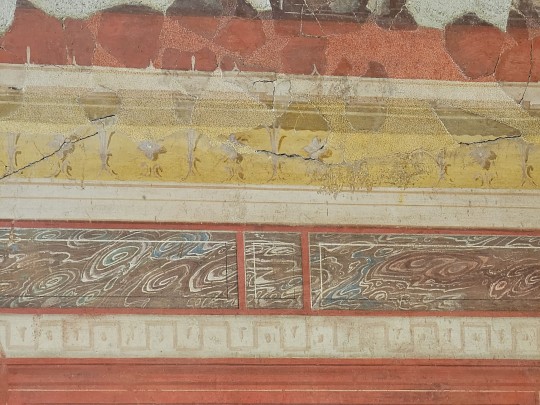
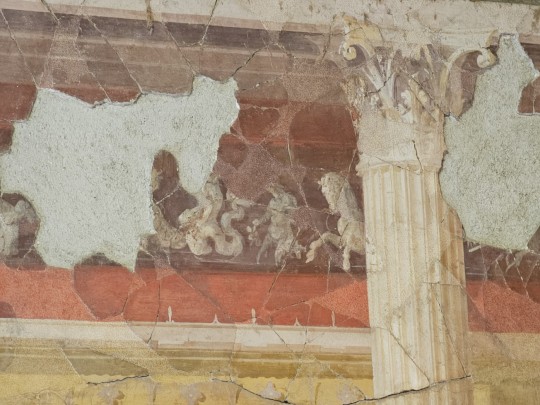
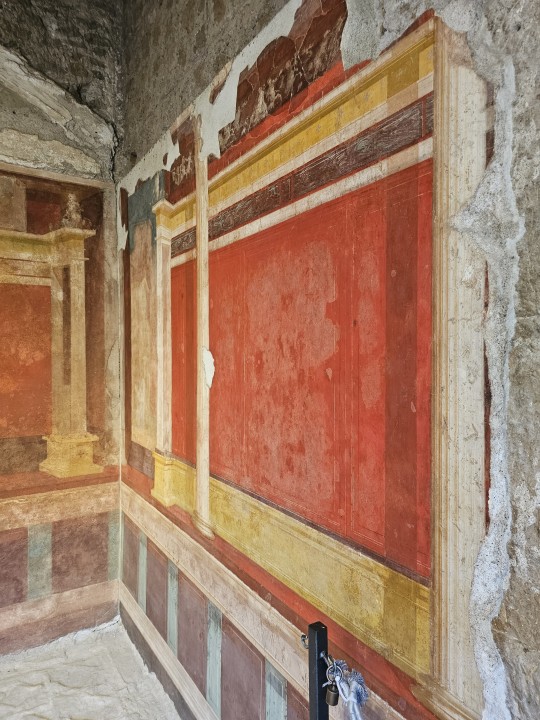

Room of the East Peristyle of the House of Augustus, 1st century BCE | In the Roman Forum complex, Palatine hill
Beautiful example of the "Second Style" of Roman fresco work, characterized by architectural trompe-l'œil and the insertion of scenes as "windows" to the outside, such as the glimpse behind the stage of the two women standing in the city in conversation.
#roman art#house of augustus#domus augusti#roman fresco#roman second style#roman forum#palatine hill#roman villa#ancient rome#roman empire
217 notes
·
View notes
Text
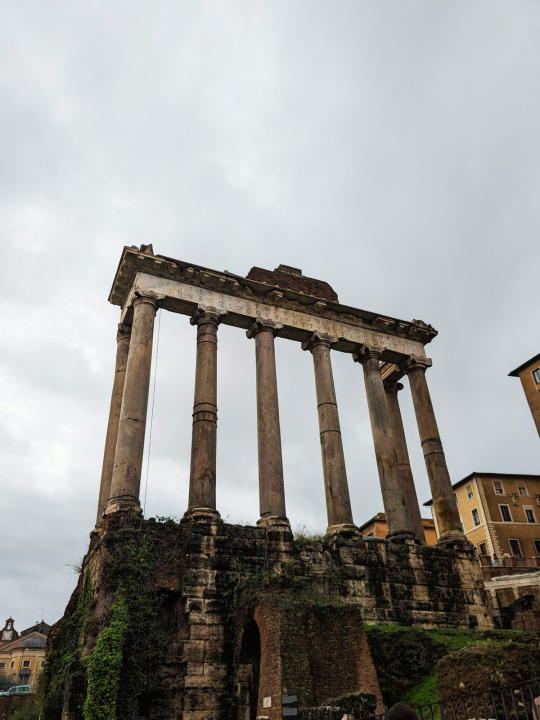
roman ruins on palatine hill - rome, italy
#mine#rome#italy#roma#italia#rome italy#roma italia#ruins#the ruins#palatine#palatine hill#nature#moss#greenery#architecture#aesthetic#pretty#wanderlust#travel#traveling#travelling
352 notes
·
View notes
Text
48 notes
·
View notes
Text
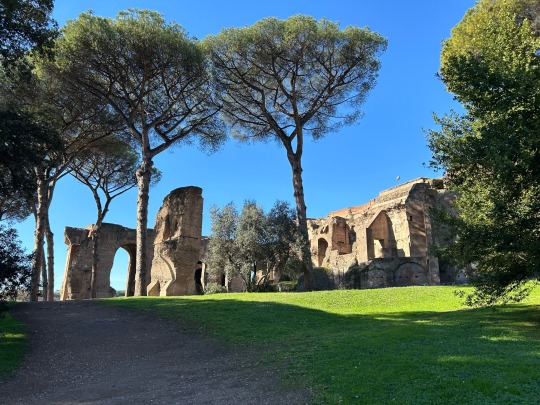
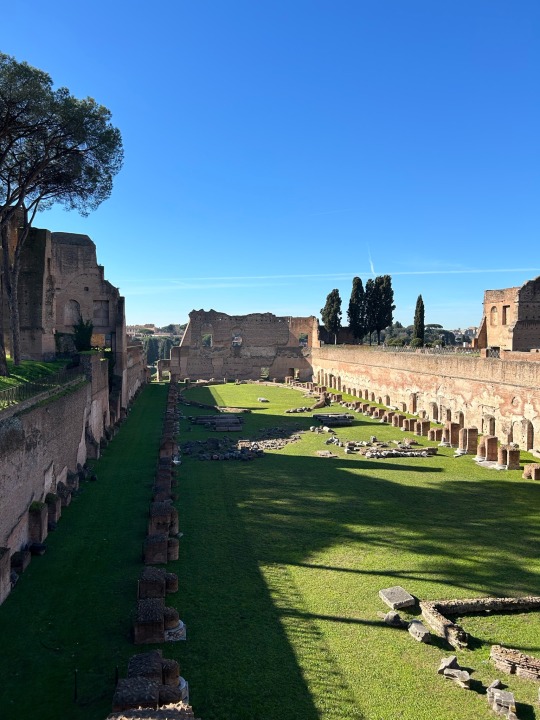


Got bored, somehow ended up in Italy: Explorations of the Palatine Hill, Rome.
Feb 15, 2024
#got bored#travel#architecture#ancient history#Ancient Rome#archaeology#wandering#original photography#photographers on tumblr#photography#urbanexploration#Rome#Roma#Italy#Italia#palatine hill#wanderingjana
20 notes
·
View notes
Text

Rovine, Palatino, Roma, 2009.
15 notes
·
View notes
Text
Judas Trees Blooming at The Palatine Hill


#Judas Tree#Spring#Tree#Pink#Flowers#Springtime#Cercis Siliquastrum#Plaques#Palatine Hill#Rome#Italy
11 notes
·
View notes
Text

A View of Rome from the Palatine by Carl Ludwig Frommel
German, 1813-1817
watercolor, graphite, and gum arabic
Metropolitan Museum of Art
#Rome#Ancient Rome#Palatine Hill#Romanticism#landscape#picturesque#Carl Ludwig Frommel#Karl Ludwig Frommel#art#watercolor#Met Museum#Metropolitan Museum of Art#ruins#ancient ruins
43 notes
·
View notes
Text


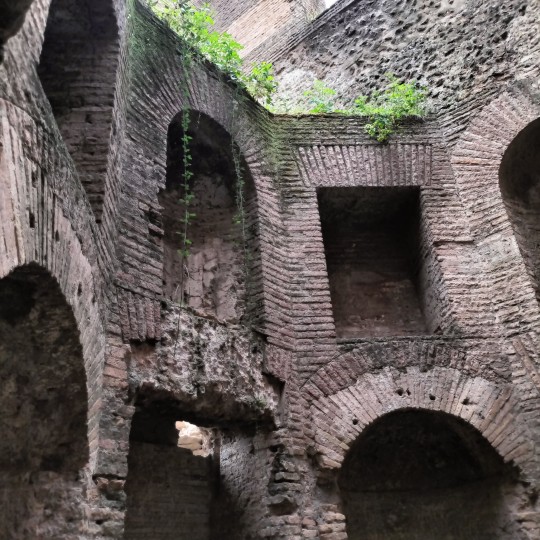
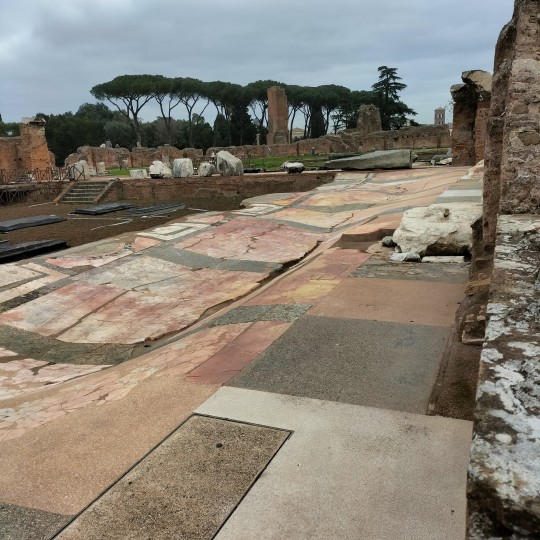






visited the palatine hill + palatine museum
#paiawon.txt#tagamemnon#archaeoblr#archaeology#art history#rome#roma#palatine hill#palatino#palatine museum
9 notes
·
View notes
Text


By Jane von Mehren
11 January 2023
The highly civilized Etruscans had a huge impact on the city’s eventual geography, architecture, government, trade, and agriculture.
They created excellent schools to which rich Romans sent their sons, much as they would later send them to Greek institutes.
By the sixth century B.C., some of Rome’s most famous institutions, from the Forum to the Senate, were in existence but even the most reputable historians — including Fabius, Livy, and Plutarch — started their accounts of the empire in legend.
Legendary beginnings

The story of Rome’s founding begins in Alba Longa, the first “city” of Latium, a region in central western Italy, occupied by Latins.
The area had been inhabited since the Bronze Age by farming communities and was known to the ancient Greeks, which is perhaps why Aeneas, a Trojan prince, is said to have established it around 1150 B.C.
According to legend, in Alba Longa, two of Aeneas’s descendants, the brothers Amulius and Numitor, fought over who would rule.
Amulius triumphed, killing Numitor’s sons and exiling his daughter, Rhea Silvia, to become a Vestal Virgin.
Through divine intervention, she gave birth to the twins Romulus and Remus.
Threatened by these potential claimants to his throne, Amulius beheaded Rhea Silvia and abandoned the babies in the river Tiber.
Miraculously, a she-wolf rescued and cared for the boys until a shepherd, Faustulus, adopted them, raising them on the Palatine Hill, located in modern-day Rome.
The legend goes on to say that the brothers established the city of Rome on the banks of the Tiber River, where it was narrow enough for crossing and the hills provided a good defensive position.
The land between the hills, however, was quite marshy and not all that fertile.
The twins soon quarreled about the city’s exact boundaries and Romulus killed Remus.
Romulus, along with the outlaws and criminals he recruited, invited neighboring tribe the Sabines, who had resisted intermarrying with the Romans, to a fête.
During the merriment, Romulus raised his cloak signaling his men to seize and abduct the young Sabine women.
As the origin story goes, being Roman wives suited the women and they stopped the Sabine men from battling the Romans when they came to recapture them.
In the end the Sabines remained in Rome as part of the new city.
Influences in the area

Archaeological evidence tells us that Rome’s actual origins were less dramatic.
The first Romans were Latin farmers and shepherds living in small village huts on the Esquiline and Palatine hills.
The Sabines, a tribe living to the north, divided soon after the city’s founding, and some of them came south and united with Rome’s people.
Rome remained relatively primitive until the 600s B.C., when the Etruscans, who controlled a series of city-states to the north, began taking control of the city.
Kingdom of Rome
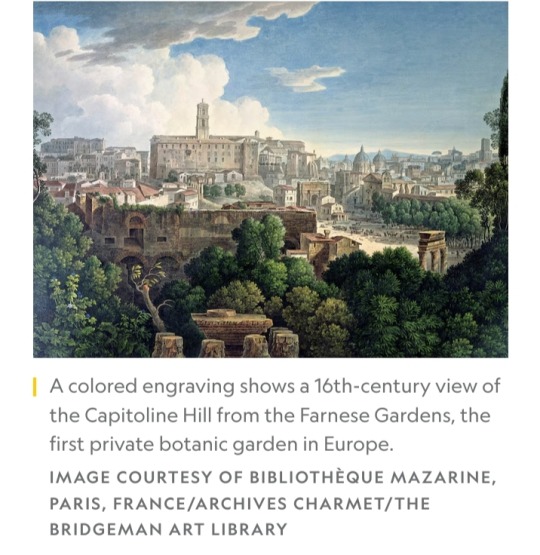
While modern scholars discount some of the accounts of ancient Roman historians, they agree that during the first phase of its history — from approximately 753 to 509 B.C. — Rome was ruled by kings.
According to these writers, Romulus was the first, succeeded by Numa Pompilius, a Sabine, and in 616 B.C., by an Etruscan named L. Tarquinius Priscus.
Kings had almost absolute power, serving as administrative, judicial, military, and religious leaders. A senate acted as an advisory council.
The king chose its members, who became known as patricians, from the city’s leading families.
Unlike later monarchs, Roman kingship was not inherited.
After a king died, there was a period known as an interregnum, when the Senate chose a new ruler, who was then elected by the people of Rome.
The king-elect needed to obtain approval of the gods and the imperium, the power to command, before assuming his throne.
Etruscan influences
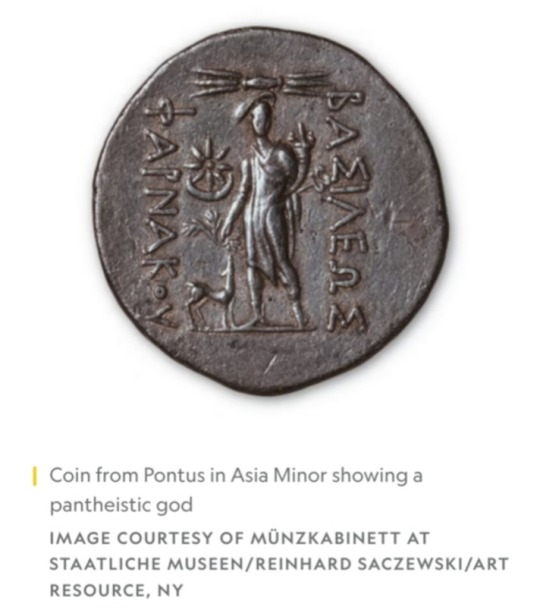
The Etruscans ruled a loose confederation of city- states that stretched from Bologna to the Bay of Naples.
It remains unclear where they originated, but they used a version of the Greek alphabet and some ancient sources describe them as coming from Asia Minor.
Around 650 B.C., they were already dominant in the region and took control of Rome, wanting its strategic position on the Tiber.
Under Etruscan kings, Rome grew from a series of villages into a proper city.
The Etruscans drained the marshes around the city, constructed underground sewers, laid out roads and bridges.
They established the cattle market, Forum Boarium, as well as Forum Romanum, the central market and meeting place that evolved into the heart of the empire.
Toward the end of this period of Etruscan influence, the first temple of Jupiter was built on the Capitoline Hill.
This temple, although rebuilt many times, became the symbol of Rome’s power.
Founding the Republic

The era of Roman kings ended in 509 B.C., when the Romans supposedly expelled the last Etruscan king, L. Tarquinius Superbus, in another mythicized event.
As recounted by historians, including Livy, the son of Tarquinius Superbus, Sextus, raped at knifepoint the noblewoman Lucretia, wife of the king’s great nephew.
Lucretia, feeling that her honor and virtue had been lost, committed suicide.
Her uncle Brutus swears to avenge her and commits to revolution and the expulsion of the monarchy.
To the Roman people, her story represents the tyrannical powers of the monarch on the state, and so the saga of Lucretia is cited as the event that spurred the Roman Republic into being.
In place of the monarchy, Romans established a republic, which lasted until 30 B.C.
Over the course of nearly five centuries, Rome became a dominant Western power, seizing territory throughout the Mediterranean, creating an enormous and efficient army, and learning how to administer its vast provinces.

NOTE:
The traditional date for the founding of Rome is 21 April 753 BC.
#Rome#Ancient Rome#Romulus#Remus#Alba Longa#Latium#Italy#Aeneas#Amulius#Numitor#Rhea Silvia#Vestal Virgin#Faustulus#Palatine Hill#Tiber River#Sabines#Etruscans#Numa Pompilius#L. Tarquinius Priscus#interregnum#imperium#Forum Boarium#Forum Romanum#Capitoline Hill#Temple of Jupiter#L. Tarquinius Superbus
3 notes
·
View notes
Text
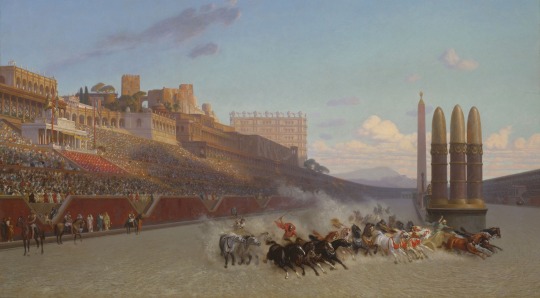
Chariot Race by Jean Léon Gérôme
#chariot racing#chariots#art#painting#history#chariot race#rome#ancient#circus maximus#palatine hill#imperial palace#games#equestrian#roman
49 notes
·
View notes
Text

1 note
·
View note
Text
5 Heartbreaking Roman Myths That’ll Captivate You | Ancient Origins
https://www.ancient-origins.net/myths-legends-europe/roman-myths-0018307
View On WordPress
#Adonis#Amulius#Ancient Rome#Apollo#Argus#Aventine Hill#Cow#Daphne#Eurydice#Io#Italy#Juno#Jupiter#Laurel Tree#Lyre#Mars#Orpheus#Palatine Hill#Peneus#Remus#Roman Mythology#Roman Pantheon#Rome#Romulus#Seven Hills#She-wolf#Tiber River#Venus#Vestal Virgin#White Cow
0 notes
Text

statue of a goddess of hera borghese type
#mine#aesthetic#pretty#tan#beige#tan aesthetic#beige aesthetic#indie#light#light indie#art#gallery#rome#italy#palatine hill#statue
73 notes
·
View notes
Text
One Day Itinerary In Rome
A one-day itinerary in Rome will allow you to see some of the city's most iconic landmarks and soak in its rich history. Rome is a city with a lot to offer, so you'll have to prioritize what you want to see. Here's a suggested itinerary for a day in Rome:
Morning:
Colosseum: Start your day early at the Colosseum, also known as the Flavian Amphitheatre. It opens at 8:30 AM. Arriving early will help you beat the crowds and the heat.
Roman Forum: After visiting the Colosseum, explore the nearby Roman Forum, which was the center of ancient Rome's political and social life.
Palatine Hill: This is also adjacent to the Colosseum and the Roman Forum. It offers great views of the city and is the legendary birthplace of Rome.
Lunch:
Trastevere: Head to the charming Trastevere neighborhood for lunch. It's known for its narrow cobblestone streets and traditional Roman trattorias. Try some local Roman dishes like cacio e pepe or amatriciana.
Afternoon:
Pantheon: After lunch, make your way to the Pantheon, an incredibly well-preserved ancient Roman temple that is now a church. It's free to enter.
Piazza Navona: Stroll over to the Piazza Navona, a beautiful square featuring Bernini's Fountain of the Four Rivers.
Trevi Fountain: Visit the Trevi Fountain and toss a coin over your left shoulder into the fountain to ensure your return to Rome.
Dinner:
Campo de' Fiori: For dinner, head to Campo de' Fiori, a lively square with plenty of restaurants and bars. Try some more delicious Roman cuisine.
Evening:
Spanish Steps: After dinner, walk to the Spanish Steps and enjoy the bustling atmosphere of this popular gathering spot.
Pincian Hill: Finally, end your day with a leisurely stroll up Pincian Hill, where you can enjoy pannoramic views of the city at night. It's a peaceful place to reflect on your day in Rome.
Remember to wear comfortable walking shoes, stay hydrated, and take your time to savor the sights and sounds of Rome. This itinerary will give you a taste of the city's history, culture, and cuisine, but keep in mind that Rome has so much more to offer if you have more time to explore.
0 notes
